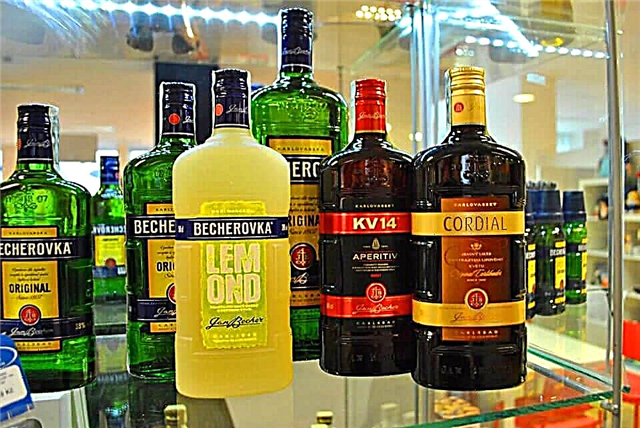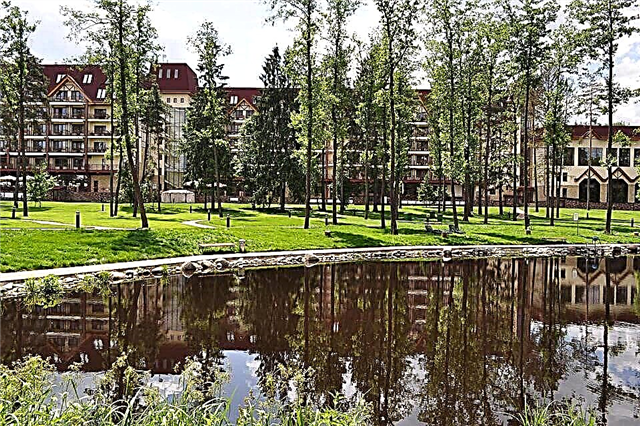The oldest St. Danilov Monastery in Moscow is currently the administrative and, first of all, the spiritual center of Russia. Located in a picturesque place on the banks of the river, it amazes with its beautiful and unique Russian architecture.
Construction history

The monastery was founded in 1282 by the fourth son of Prince Alexander Nevsky - Daniel. It is named in honor of Daniel the Stylite, who lived in the 5th century, and was named for his ascetic feat. While in Syria, Daniel met the monk Simeon, who for many years lived on the top of a stone eminence - a pillar. The righteous life of the monk Simeon amazed Daniel, he decided to follow his example and, settling near the city of Constantinople, began a new life as a pillar. After some time, the ability to heal and predict appeared in him.
Prince Daniel was a peaceful and meek man. He lived a little over forty years and in his short but fruitful and eventful life he tried to do as much as possible for the rise of the Moscow principality and the unification of the Russian lands. During the reign, Moscow became an independent appanage principality. At the end of his life, Prince Daniel was tonsured, and in the 17th century he was canonized. The remains of the prince, which used to be in the cemetery, were solemnly transferred to the Trinity Cathedral.
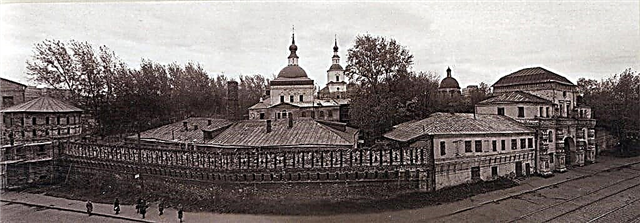
After the closure of the monastery complex in 1930, the holy relics were placed in the Church of the Resurrection of the Word. Then information about their location is lost, has not yet been found. The monastery was revived under Ivan the Terrible. In 1555-1560, a stone church of the Holy Fathers of the Seven Ecumenical Councils was built. In May 1561, it was consecrated by Metropolitan Macarius in the presence of Ivan the Terrible, his entourage and relatives. The tsar presented to the cathedral the Vladimir Icon of the Mother of God, on which there were portraits of the sovereign himself, the eldest son and Metropolitan of Moscow Macarius.
The monastery territory was surrounded by a massive stone wall with observation towers at the very beginning of the 17th century. Danilov Monastery several times during its existence was subjected to robberies and arson. He suffered greatly from the fire in 1610, in the so-called Time of Troubles, when False Dmitry II with an army approached the walls of the city, wishing to seize the throne. During the Patriotic War, the French conquerors plundered and mercilessly destroyed Orthodox shrines, seized and took away with them the entire church treasury.
The monastery during the Soviet period
In fact, after the power in the country passed to the Bolsheviks, the temple complex from 1918 could not fully function, but until the final closure of the monastic life continued. In particular, bishops appointed by Patriarch Tikhon of Moscow arrived here in the 1920s, although they were not able to fulfill the assigned duties due to the prohibitions of the authorities.
In 1929, a colony for juvenile delinquents and children of the repressed was established here. Living conditions were inhuman, children often got sick and died, they were buried in the old monastery cemetery. The unique library suffered during the closure - some of the books disappeared, some are still in the Moscow archives. Probably, the old church books will be returned to the present owner.
For more than 50 years, the ROC did not own the religious complex; it was returned only in 1983. The authorities also allowed the construction of new service and religious buildings. The restoration was funded by the Moscow parishes and receipts from nonresident dioceses. The work was supervised by the architect I. I. Makovetskiy. The true revival of the temple complex began under Archimandrite Eulogius.
In less than five years, the monastic brethren restored the buildings, and in 1988 a center was organized here to celebrate the great event for all Orthodox Christians - the 1000th anniversary of the Baptism of Rus.
Buildings and constructions
The current male monastery in Moscow was founded in the XIII century, the buildings that have survived to this day were erected much later - in the XVI, nevertheless, the complex is considered the oldest. Within its walls are buildings of religious significance, residential and administrative buildings - a hospital building, a hotel, a room for brethren, the residence of the Holy Synod and others.
Church of the Holy Fathers of the Seven Ecumenical Councils

This is the oldest stone building currently existing on the territory. The church was built from 1555 to 1560, in the spring of 1561 it was consecrated by Metropolitan Macarius in the presence of Ivan the Terrible and his entourage. In the second half of the 70s of the 17th century, the Intercession Church-refectory was built next to it. In 1730, the refectory was dismantled and a new one was erected on the vaults, in the Moscow Baroque style.
In 1752, on the west side, the Church of Daniel the Stylite was built, in 1806 side chapels were added dedicated to Saints Boris and Gleb, as well as to Prince Daniel. In 1970-1980, the building was restored and consecrated again in 1988. The building is a complex structure that has been rebuilt several times. A unique composition for the architecture of Moscow has developed, in which the two upper churches are placed on one lower one.
Trinity Cathedral

The most significant building in the style of Russian classicism. According to some sources, the project belongs to the architect Bove, others believe that the architect Tyurin was the author. In 1930, the cathedral was closed and the interior was completely rebuilt. Many unique details have been irretrievably lost.
In the XX century. after the transfer of the monastery to the Russian Orthodox Church, the temple was again re-planned and returned to its original appearance - the facades of the building were decorated with Tuscan porticoes, the rotunda was crowned with a domed roof. The cathedral was built on a high basement, in which the church of John the Baptist is now located. Currently, the Trinity Cathedral is the largest functioning church.
Gate Church
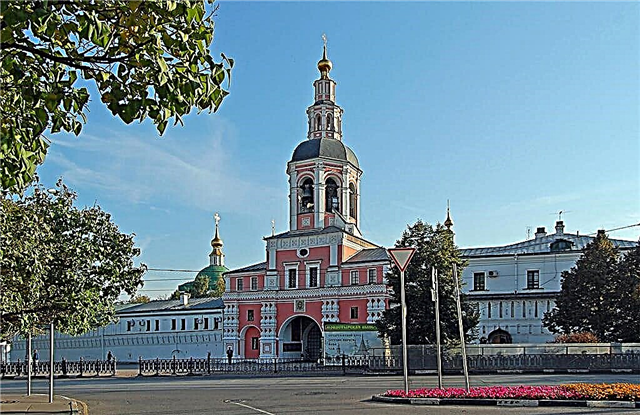
The construction of the Gate Church-Bell Tower of Simeon the Stylite dates back to 1732. Installed above the Holy Gates. The baroque building has several tiers and is richly decorated with balusters. The architecture has been preserved in its original form. The belfry above the temple was dismantled, they wanted to transfer the bells for the economic needs of the country, but they were bought out and taken to the United States by the diplomat Churles Crane, donating to Harvard University. The 45-meter bell tower was restored in 1984 with 16 new bells installed. In 2007, they were exchanged for the original ones, which are preserved at Harvard.
Modern chapels
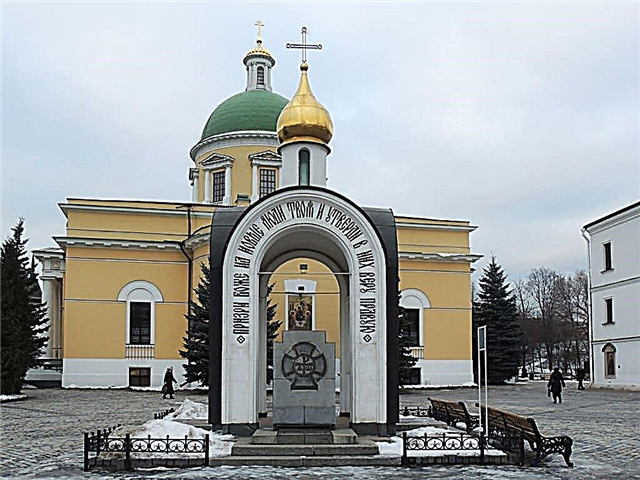
The overhead chapel was built in 1988. The project was carried out by the architect Y. Alonov, are four through arches. The structure is crowned with a cross head.
Alonov also designed the Memorial Chapel, which resembles a candle. Built near the Nagornaya tower, the place was not chosen by chance - the old necropolis, founded in the 19th century, began from here.
Behind the chapel, along the monastery wall, you can see the preserved tombstones and a stone slab with a cross, since in 1930 most of the cemetery was razed to the ground. The authorities explained that this was done in order to expand the territory for the children's colony located in the monastery.
Spiridon Trimifutsky's slipper
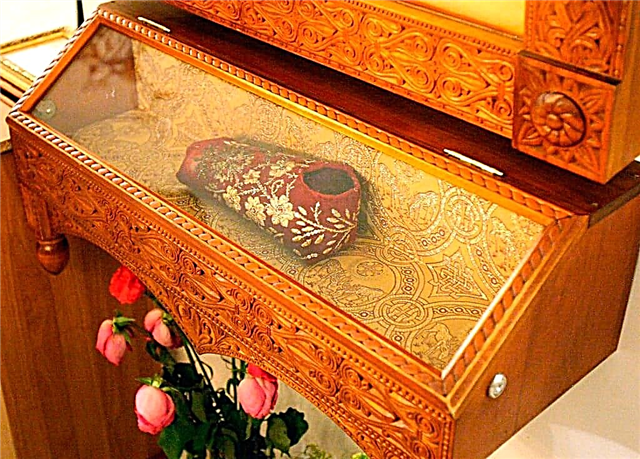
Since the XV century. The relics of Saint Spyridon of Trimifuntsky are kept in Greece. In April 2007, the Metropolitan of Kerkyra presented to the Danilov Monastery a slipper embroidered with gold threads from the relics of the saint in connection with the stay of his right hand in Russia. The slipper was placed in a glazed icon case along with the image of the saint. Spiridon of Trimifuntsky performed miracles during his lifetime, but even after his death, believers observe amazing things: his incorruptible body has the same temperature as the body of a living person.
They say that the saint still helps those in need - Spiridon's shoes wear out, they are periodically changed, and old shoes are handed over to various parishes as a shrine. Each believer can bow to the relics and ask for the secret, or leave a note, which are then burned by the ministers so that the requests are fulfilled.
The necropolis of the Danilov Monastery

According to archaeological research, burial of the deceased began here in the 15th century. During excavations carried out in the 60s of the XIX century, tombstones made of stone were found, dating from the time. Some have inscriptions in German and Latin. Since the 17th century. in the necropolis were buried ordinary monks and abbots, later representatives of the nobility, military commanders, famous patrons of art, prominent figures of Russia.
The glory of the Danilov cemetery is in the burials of talented and original personalities, the writer Gogol, poet and artist Khomyakov, philosopher Samarin, publicist Koshelev, historian Venelin and others were buried here. The necropolis was destroyed, many tombstones disappeared. Some of the remains were transferred to the Novodevichye cemetery in Moscow, including Gogol and Yazykov. Now a new building has been built on the site of the cemetery, which houses the residence of the patriarchs.
Monastery Choir

The male festive concert choir was formed in 1994. On holidays and Sundays, the choir takes part in solemn divine services, but is engaged not only in church activities: the collective also participates in educational concerts, often tours across Russia and outside our country.
The group consists of professional musicians, all of them have diplomas from higher musical institutions. The repertoire includes complex church chants in honor of Christian holidays. In addition, the collective performs waltzes and romances, Russian folk and patriotic songs, hymns. He releases discs, regularly making recordings of both old and well-known and new works.
Schedule of services
For visitors, the entrance to the territory is open from 06:00 to 21:00. Guided tours - every day from 09:00 to 18:00. A church shop was opened.
Daily:
- services are held
- you can order akathists, prayers and memorial services
- the sacrament of confession and Unction is held
Funeral, baptism and wedding ceremonies are not performed.
It should be remembered that the monastery is active, therefore, the rules for visiting must be observed: women must wear dresses or skirts below the knees, with their heads covered. Men should not wear shorts and be sure to take off their hats.
Where is it located and how to get there
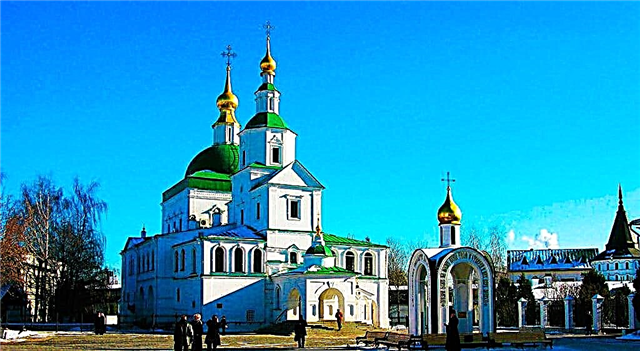
Address: Moscow, st. Danilovsky Val, 22.
How to get there:
- By metro along the Serpukhovsko-Timiryazevskaya line to the Tulskaya station (take the last carriage from the center). Then walk to Danilovskiy Val street, along the tram tracks, without turning. Time - about 10 minutes in average steps.
- By tram from the Paveletskaya metro station - the Svyato-Danilov Monastery stop.
The Danilovsky Monastery in Moscow is one of the main spiritual centers of all of Russia. Courses for adults and a Sunday school for children are open here, there is an Orthodox publishing house and an excursion service. All buildings have been restored, services are held in churches. Not only believers come to these sacred places - all people who are interested in the history of their country.

